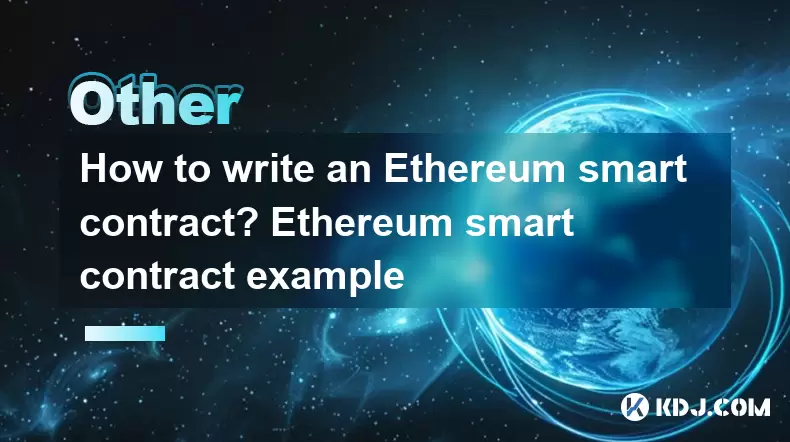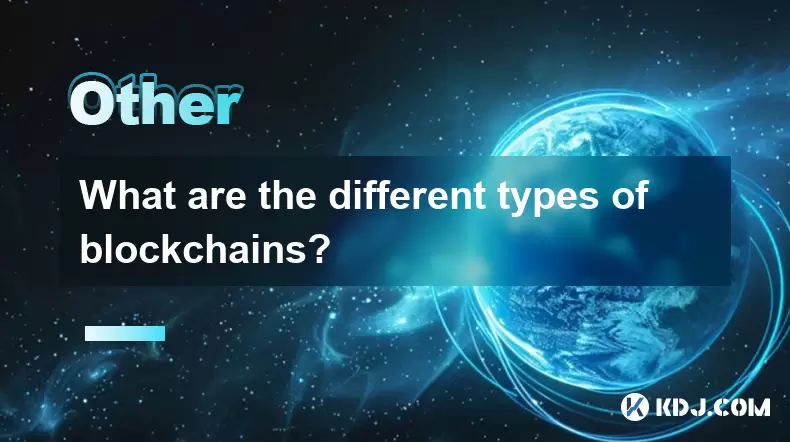-
 Bitcoin
Bitcoin $112700
-0.57% -
 Ethereum
Ethereum $3409
-3.35% -
 XRP
XRP $2.800
-6.95% -
 Tether USDt
Tether USDt $0.9998
0.05% -
 BNB
BNB $741.2
-2.50% -
 Solana
Solana $158.2
-4.71% -
 USDC
USDC $0.9999
0.02% -
 TRON
TRON $0.3220
-1.23% -
 Dogecoin
Dogecoin $0.1937
-6.71% -
 Cardano
Cardano $0.6987
-4.25% -
 Hyperliquid
Hyperliquid $36.60
-1.92% -
 Sui
Sui $3.336
-6.21% -
 Stellar
Stellar $0.3689
-6.39% -
 Chainlink
Chainlink $15.71
-3.85% -
 Bitcoin Cash
Bitcoin Cash $527.4
-2.19% -
 Hedera
Hedera $0.2295
-7.74% -
 Avalanche
Avalanche $21.05
-3.87% -
 Ethena USDe
Ethena USDe $1.001
0.02% -
 Toncoin
Toncoin $3.539
-1.75% -
 UNUS SED LEO
UNUS SED LEO $8.964
0.14% -
 Litecoin
Litecoin $105.8
-0.13% -
 Shiba Inu
Shiba Inu $0.00001184
-3.50% -
 Polkadot
Polkadot $3.501
-3.07% -
 Uniswap
Uniswap $8.831
-2.88% -
 Dai
Dai $1.000
0.03% -
 Monero
Monero $290.4
-3.99% -
 Bitget Token
Bitget Token $4.242
-1.47% -
 Pepe
Pepe $0.00001009
-5.08% -
 Cronos
Cronos $0.1253
-6.28% -
 Aave
Aave $249.9
-3.27%
How to write an Ethereum smart contract? Ethereum smart contract example
Ethereum smart contracts are self-executing agreements written in code, automatically enforcing terms when conditions are met.
Jun 15, 2025 at 11:56 pm

Understanding Ethereum Smart Contracts
Ethereum smart contracts are self-executing contracts with the terms of the agreement directly written into lines of code. These contracts run on the Ethereum Virtual Machine (EVM) and automatically execute when predetermined conditions are met. Writing a smart contract involves using specific programming languages such as Solidity, which is the most commonly used language for Ethereum development.
Smart contracts are immutable once deployed, meaning that they cannot be altered after being published to the blockchain. This characteristic makes it crucial to ensure that the code is thoroughly tested before deployment. Developers must also consider gas costs, function visibility, and security best practices when writing smart contracts.
Setting Up Your Development Environment
Before diving into writing an Ethereum smart contract, you need to set up a proper development environment. Here's how:
- Install Node.js and npm if not already installed.
- Use npm to install Truffle, a popular Ethereum development framework:
npm install -g truffle - Install Ganache, a personal blockchain for Ethereum development, to simulate transactions and test your contracts locally.
- Set up MetaMask, a browser extension wallet, to interact with your deployed contracts on testnets or mainnet.
- Choose a code editor like Visual Studio Code and install Solidity extensions for syntax highlighting and error detection.
Once these tools are in place, you can begin writing and testing your smart contract.
Writing Your First Smart Contract in Solidity
Let’s create a simple storage contract that stores and retrieves a number. Below is a basic example written in Solidity:
pragma solidity ^0.8.0;contract SimpleStorage {
uint storedData;
function set(uint x) public {
storedData = x;
}
function get() public view returns (uint) {
return storedData;
}
}
In this example:
- The
pragma solidity ^0.8.0;line specifies the version of Solidity used. - A state variable
storedDatais declared to hold an unsigned integer. - The
set()function allows anyone to update the value ofstoredData. - The
get()function is a view function that returns the current value without modifying the contract state.
Each function and variable should be clearly defined with appropriate visibility modifiers like public, private, or internal.
Compiling and Deploying the Smart Contract
To compile and deploy the above contract using Truffle and Ganache, follow these steps:
Create a new Truffle project:
truffle initPlace the Solidity file inside the
contractsdirectory.In the
migrationsfolder, create a migration script (e.g.,2_deploy_contracts.js) with the following content:const SimpleStorage = artifacts.require("SimpleStorage");module.exports = function(deployer) {
deployer.deploy(SimpleStorage);
};Compile the contract:
truffle compileStart Ganache and configure the network settings in
truffle-config.js.Deploy the contract to the local blockchain:
truffle migrate
After deployment, you can interact with the contract using Truffle Console or via web3.js or ethers.js libraries in a frontend application.
Testing the Smart Contract
Testing ensures that your contract behaves as expected under various scenarios. Truffle provides built-in support for unit testing using JavaScript or Solidity itself.
Here’s an example of a JavaScript-based test located in the test directory:
const SimpleStorage = artifacts.require("SimpleStorage");contract("SimpleStorage", accounts => {
it("should store the value 42", async () => {
const instance = await SimpleStorage.deployed();
await instance.set(42, { from: accounts[0] });
const result = await instance.get.call();
assert.equal(result, 42);
});
});
This test:
- Deploys the contract instance.
- Calls the
set()function with the value 42. - Uses
assertto verify that the stored value matches the expected output.
Always write tests for edge cases, especially when dealing with complex logic, access control, or financial operations.
Frequently Asked Questions
Q: What tools do I need besides Truffle for Ethereum smart contract development?
You can use Hardhat as an alternative to Truffle for compiling, deploying, and testing contracts. Additionally, Remix IDE is a browser-based tool ideal for beginners who want to write and test small contracts quickly without setting up a local environment.
Q: Can I modify a deployed Ethereum smart contract?
No, Ethereum smart contracts are immutable once deployed. If changes are needed, developers must deploy a new version of the contract and migrate data if necessary. However, patterns like proxy contracts can be used to achieve upgradeable behavior.
Q: How much does it cost to deploy a smart contract on Ethereum?
The cost depends on the complexity of the contract and the current gas price on the network. You can estimate gas costs using tools like Remix IDE or by checking the transaction details in MetaMask during deployment. More complex contracts consume more gas and therefore cost more.
Q: Is it safe to write my own smart contract for production use?
While learning to write smart contracts is valuable, deploying them in production requires thorough security audits and extensive testing. It is recommended to follow best practices, use well-established libraries like OpenZeppelin, and consult experienced auditors before launching any contract handling real funds.
Disclaimer:info@kdj.com
The information provided is not trading advice. kdj.com does not assume any responsibility for any investments made based on the information provided in this article. Cryptocurrencies are highly volatile and it is highly recommended that you invest with caution after thorough research!
If you believe that the content used on this website infringes your copyright, please contact us immediately (info@kdj.com) and we will delete it promptly.
- Ruvi AI: The Millionaire Maker with a Price Spike on the Horizon?
- 2025-08-03 02:50:12
- DOGE, Utility Coins, and Smart Money: A New Era for Crypto Investing?
- 2025-08-03 02:50:12
- WeWake: Investors Flock to Top Presale Crypto as Walletless Onboarding Takes Center Stage
- 2025-08-03 02:30:12
- Meme Coins in 2025: Investment, Upside Potential, and Trolling Cats?
- 2025-08-03 02:30:12
- Bitcoin, XRP, and the Price Drop Blues: What's Shakin' in Crypto?
- 2025-08-03 00:30:12
- Cold Wallet, Troncoin, and Shiba Inu: Navigating Crypto Opportunities in the Concrete Jungle
- 2025-08-03 01:51:38
Related knowledge

What is the difference between on-chain and off-chain transactions?
Aug 02,2025 at 04:22pm
Understanding On-Chain TransactionsOn-chain transactions refer to digital asset transfers that are recorded directly on a blockchain ledger. These tra...

What is the double-spending problem and how does blockchain prevent it?
Aug 02,2025 at 01:07pm
Understanding the Double-Spending ProblemThe double-spending problem is a fundamental challenge in digital currency systems where the same digital tok...

What is the difference between a blockchain and a database?
Aug 01,2025 at 09:36pm
Understanding the Core Structure of a BlockchainA blockchain is a decentralized digital ledger that records data in a series of immutable blocks linke...

How does blockchain handle scalability?
Aug 02,2025 at 02:58pm
Understanding Blockchain Scalability ChallengesBlockchain scalability refers to a network's ability to handle an increasing volume of transactions wit...

What are the different types of blockchains?
Aug 03,2025 at 03:01am
Public Blockchains: Open and Decentralized NetworksPublic blockchains are the most widely recognized type of blockchain, characterized by their open a...

What is a hash in a blockchain?
Aug 02,2025 at 05:28am
Understanding the Concept of Hash in BlockchainA hash in the context of blockchain technology refers to a unique digital fingerprint generated by a cr...

What is the difference between on-chain and off-chain transactions?
Aug 02,2025 at 04:22pm
Understanding On-Chain TransactionsOn-chain transactions refer to digital asset transfers that are recorded directly on a blockchain ledger. These tra...

What is the double-spending problem and how does blockchain prevent it?
Aug 02,2025 at 01:07pm
Understanding the Double-Spending ProblemThe double-spending problem is a fundamental challenge in digital currency systems where the same digital tok...

What is the difference between a blockchain and a database?
Aug 01,2025 at 09:36pm
Understanding the Core Structure of a BlockchainA blockchain is a decentralized digital ledger that records data in a series of immutable blocks linke...

How does blockchain handle scalability?
Aug 02,2025 at 02:58pm
Understanding Blockchain Scalability ChallengesBlockchain scalability refers to a network's ability to handle an increasing volume of transactions wit...

What are the different types of blockchains?
Aug 03,2025 at 03:01am
Public Blockchains: Open and Decentralized NetworksPublic blockchains are the most widely recognized type of blockchain, characterized by their open a...

What is a hash in a blockchain?
Aug 02,2025 at 05:28am
Understanding the Concept of Hash in BlockchainA hash in the context of blockchain technology refers to a unique digital fingerprint generated by a cr...
See all articles

























































































